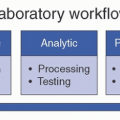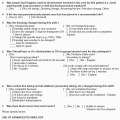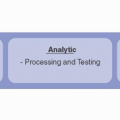Core component |
Recommendation or good practice statement |
Strength of recommendation and quality of evidence |
1. IPC programs |
1a. Healthcare facility level: IPC program with a dedicated, trained team at each acute healthcare facility to prevent healthcare-associated infection (HAI) and combat antimicrobial resistance (AMR). |
Strong, very low quality |
|
1b. National level: Active, stand alone, national IPC programs with clearly defined objectives, functions, and activities established for the purpose of preventing HAI and combating AMR; national IPC programs should be linked with other relevant national programs and professional organizations. |
Good practice statement |
2. IPC guidelines |
Evidence-based guidelines should be developed and implemented for the purpose of reducing HAI and AMR. The education and training of relevant healthcare workers on the guideline recommendations and the monitoring of adherence with guideline recommendations should be undertaken to achieve successful implementation. |
Strong, very low quality |
3. IPC education and training |
3a. Healthcare facility level: IPC education should be in place for all healthcare workers by utilizing team- and task-based strategies that are participatory and include bedside and simulation training to reduce the risk of HAI and AMR. |
Strong, moderate quality |
|
3b. National level: IPC program should support the education and training of the healthcare work force. |
Good practice statement |
4. Surveillance |
4a. Healthcare facility level: Facility-based HAI surveillance should be performed to guide IPC interventions and detect outbreaks, including AMR surveillance with timely feedback of results to healthcare workers and stakeholders and through national networks. |
Strong, very low quality |
|
4b. National level: HAI surveillance programs and networks that include mechanisms for timely data feedback and with the potential to be used for benchmarking purposes should be established to reduce HAI and AMR. |
Strong, very low quality |
5. Multimodal strategies |
5a. Healthcare facility level: IPC activities using multimodal strategies should be implemented to improve practices and reduce HAI and AMR. |
Strong, low quality |
|
5b. National level: IPC programs should coordinate and facilitate the implementation of IPC activities through multimodal strategies on a nationwide or subnational level. |
Strong, low quality |
6. Monitoring/audit of IPC practices and feedback |
6a. Healthcare facility level: Regular monitoring/audit and timely feedback of healthcare practices according to IPC standards should be performed to prevent and control HAI and AMR at the healthcare facility level. Feedback should be provided to all audited persons and relevant staff. |
Strong, low quality |
|
6b. National level: IPC monitoring and evaluation program should be established to assess the extent to which standards are being met and activities are being performed according to the program’s goals and objectives. Hand hygiene monitoring with feedback should be considered as a key performance indicator at the national level. |
Strong, moderate quality |
7. Workload, staffing and bed occupancy (acute healthcare facility only) |
Elements should be adhered to in order to reduce the risk of HAI and the spread of AMR:
(1) bed occupancy should not exceed the standard capacity of the facility;
(2) healthcare worker staffing levels should be adequately assigned according to patient workload. |
Strong, very low quality |
8. Built environment, materials and equipment for IPC at the facility level (acute healthcare facility only) |
8a. Patient care activities should be undertaken in a clean and/or hygienic environment that facilitates practices related to the prevention and control of HAI, as well as AMR, including all elements around the water, sanitation and health infrastructure and services and the availability of appropriate IPC materials and equipment. |
Good practice statement |
|
8b. Materials and equipment to perform appropriate hand hygiene should be readily available at the point of care. |
Strong, very low quality |







